Ground vs Roof vs Wall Mount: Which Is Right For You
There are different benefits to mounting your panels on your roof versus on the wall or ground. Booking a free assessment with Solvest is a great way to get personalized recommendations about which system is right for you!
Roof
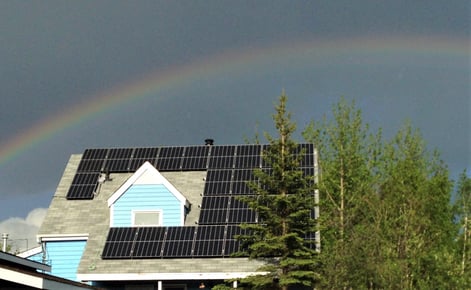
Often a roof install is the sole option for residents living in town due to limited space. Fortunately, we can tailor a solar system to work for pretty much any roof.
That being said, an ideal roof for solar would be south-facing and have a tilt anywhere between 30 and 60 degrees; 45 degrees being optimal.
Minimal shading from trees and other obstructions is another important factor. Solvest's experienced assessors will gauge how significant various sources of shading on your property might be and confirm their impact more accurately using 3D modeling software back at the office.
While tilt and azimuth are notable considerations with roofs, both can be mitigated with customized racking. This leaves sufficient space and minimal shading as the two most important factors; if you have those, your roof is likely a great candidate for solar.
To learn more about roof installs, jump to Is my roof fit for solar?
Ground
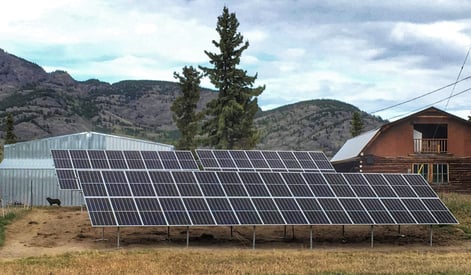
If you have the space on your property, we usually encourage you to consider a ground mount system.
The benefit of such a system is we can face it perfectly south at an ideal angle, and that you can easily brush the snow off your panels throughout the winter, which increases efficiency by about 2-10%!
While ground mounts involve a bit more money upfront, the cost is still relatively comparable with a roof system and the accessibility/efficiency advantage makes it a worthwhile investment.
To learn more about roof installs, jump to Is my ground fit for solar?
Wall
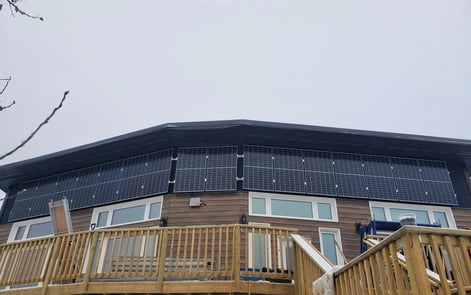
Wall mounts can be great when trying to maximize energy production throughout the winter, as they can more easily capture the sun on its low horizon and are far less affected by snowfall.
However, rarely do we have clients who have the wall space to accommodate such systems.
Typically, wall mounts end up being more expensive because of the racking and higher installation costs. We would only point clients in this direction in certain situations, such as in some flat roof cases or in the case of significant obstructions on the roof.
Roof or ground mounts are often the most feasible options, however, there are cases where we would propose a wall mount.
Is my roof fit for solar?
Every roof is subject to a mandatory engineering assessment before Solvest will go ahead with the final install. Solvest handles this; thorough photo documentation is taken of the trusses or vaulted ceiling and submitted to our contracted engineer who will assess the structural integrity of said roof. This is to ensure the roof is fit to handle the combined loads of the solar system and snow.
I have shingle roofing
- We recommend that you have your roof re-shingled prior to installing a solar system if your shingles are at least 10 years old.
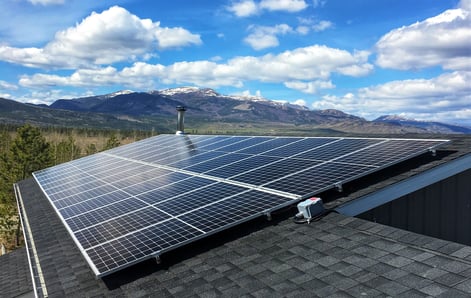
- This is to ensure that your shingles will last as long as possible in conjunction with the long life & warranty of solar modules.
- Any re-shingling after the panels are installed will involve removing and then replacing your system; we don't want you running into future expenses sooner than necessary.
- We use tin flashing under each shingle that we drill into in order to prevent any potential water damage and thereby maintain the integrity of your roof.
I have tin roofing
- In most cases, there is no issue with installing on a tin roof as is.
- If your roof is especially old or you have concerns, please do not hesitate to contact us
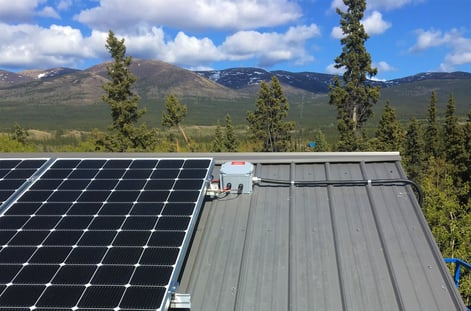 and we will happily talk these over with you.
and we will happily talk these over with you. - Otherwise, our assessors always take a photo of your roof during your assessment and our technicians would be able to see any potential issues from that.
- During the install, we use racking systems that do not penetrate your roof surface or have rubber seals, thereby maintaining the integrity of your roof.
An ideal roof for solar has a tilt within 30-45 degrees, has minimal obstructions (vents, bathroom stacks, chimneys, snow stops, skylights, antennas, etc), minimal shading (large trees, neighbouring buildings, etc), and is south-facing.
In saying this, we can make solar fit the conditions of almost any rooftop. East-West systems are very efficient as well, and we can use special racking to tilt panels on flat roofs if required.
Is my ground fit for solar?
Do I have room?
The ideal location for a ground array is a large area with maximum sun exposure from the south. Typically, a field or the edge of a clearing are perfect places for a ground mount.
The Nuance Opsrey ground-mounted systems Solvest is currently installing come in multiples of 16 modules.
The layout is 2 rows of 8 modules in portrait, with each module measuring approximately 2m x 1m.
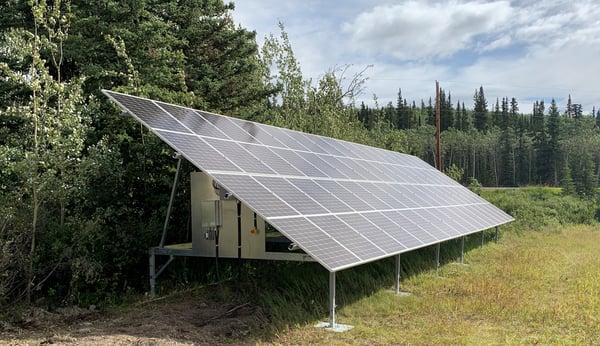
(32 modules by Fox Lake)
The racking height is adjustable from 0.3m to 1m above the ground, and the highest point of the array is about 3.66m tall. For reference, the rim of a regulation basketball hoop is 3.3m tall.
Level ground is best; however, the racking can handle up to 0.65m in height variation.
We like to ensure there's at least 14m (46 ft) of clearance in the front and to the sides of the array to avoid significant shading. The clearance requirements vary depending on the height of shading factors.
Is there a limit to how far the system can be from my house?
We try to limit the distance between your solar system and your connection point to 100 m. This is to satisfy the Canadian Electrical Code and minimize power loss due to voltage drop.
At Solvest, we aim to keep the voltage drop at 3% or less; we do this by:
- Keeping the distance between the solar system and the connection point (panel or meter) within that 100 m limit.
- Mitigating voltage drop by using larger conductors when necessary.
What about trenching?
Ground systems require a trench from the array to your electrical panel or farm service meter (usually whichever is closest).
Roadways and driveways require trenching at a depth of 24". Otherwise, only 18" is required.
Our trenching machinery is 1.5m wide, this is important to keep in mind when the trenching path is through trees or other obstacles.
We hope this helped reflect on where you may want your solar system installed and what would work best for you. And if you haven’t a clue, that is more than okay! Our experienced Solvest team will happily go through your options with you during your free assessment and answer any additional questions you may have.
Have a question about solar or Solvest that wasn't answered in our blog? Send us a message!
